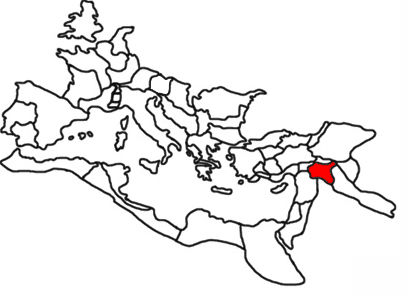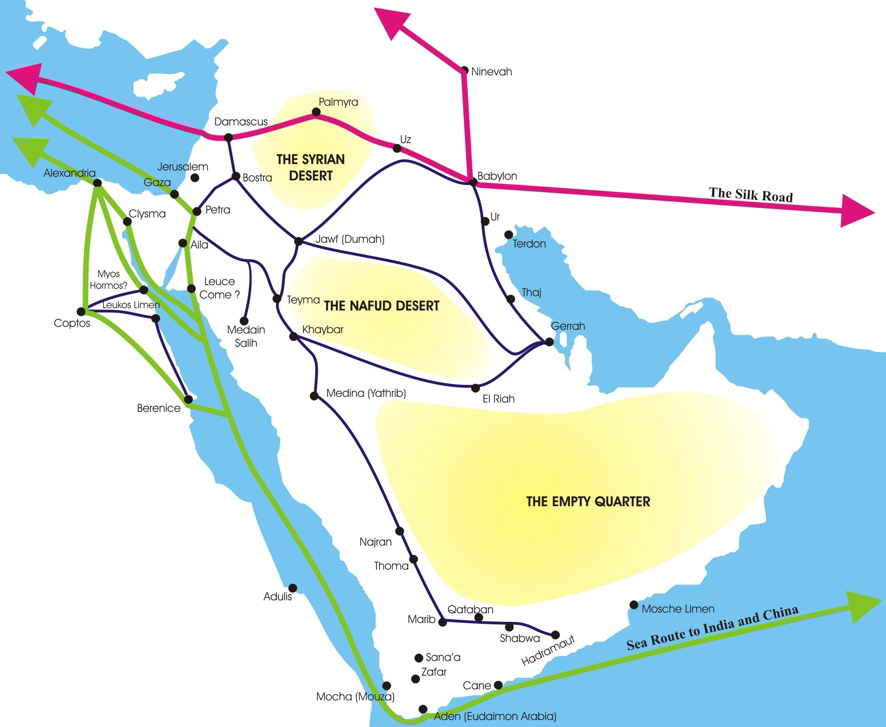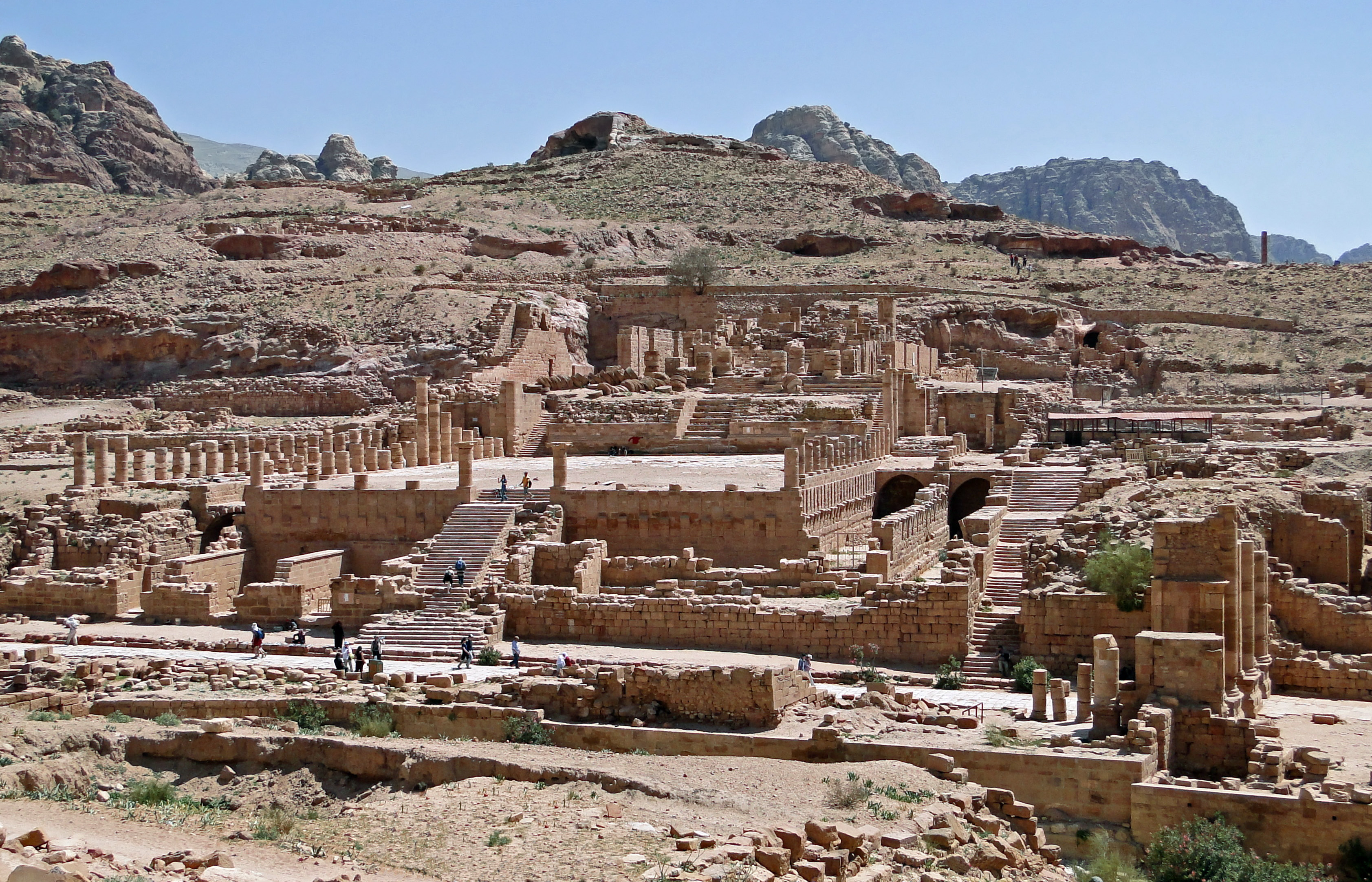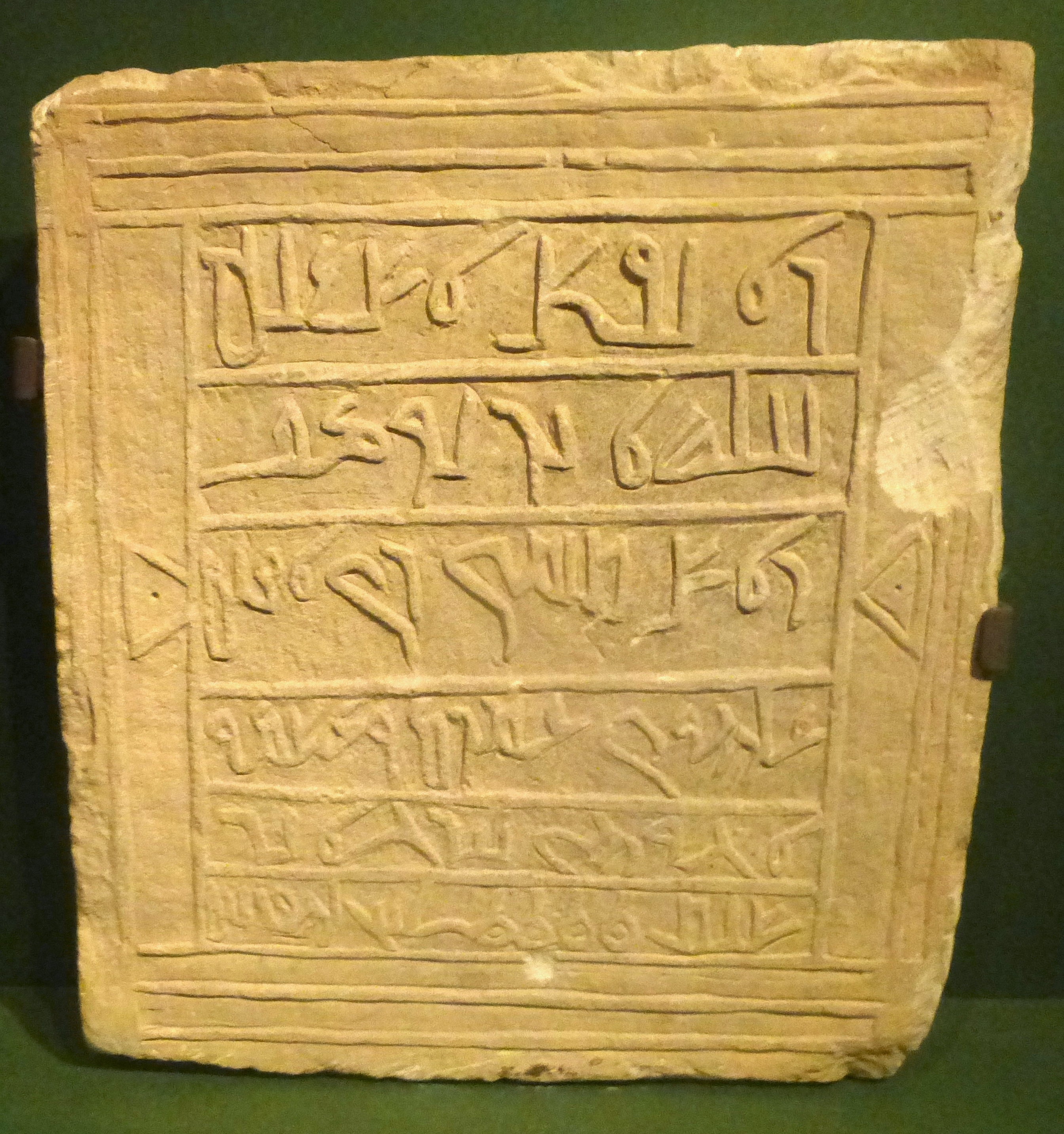|
Nabataeans
The Nabataeans or Nabateans (; Nabataean Aramaic: , , vocalized as ) were an ancient Arabs, Arab people who inhabited northern Arabian Peninsula, Arabia and the southern Levant. Their settlements—most prominently the assumed capital city of Raqmu (present-day Petra, Jordan)—gave the name ''Nabatene'' () to the Arabian borderland that stretched from the Euphrates to the Red Sea. The Nabateans emerged as a distinct civilization and political entity between the 4th and 2nd centuries BC, with Nabataean Kingdom, their kingdom centered around a loosely controlled trading network that brought considerable wealth and influence across the ancient world. Described as fiercely independent by contemporary Greco-Roman accounts, the Nabataeans were annexed into the Roman Empire by Emperor Trajan in 106 AD. Nabataeans' individual culture, easily identified by their characteristic finely potted painted ceramics, was adopted into the larger Greco-Roman culture. They converted to Christi ... [...More Info...] [...Related Items...] OR: [Wikipedia] [Google] [Baidu] |
Nabataean Kingdom
The Nabataean Kingdom (Nabataean Aramaic: 𐢕𐢃𐢋𐢈 ''Nabāṭū''), also named Nabatea () was a political state of the Nabataeans during classical antiquity. The Nabataean Kingdom controlled many of the trade routes of the region, amassing large wealth and drawing the envy of its neighbors. It stretched south along the Tihamah into the Hejaz, up as far north as Damascus, which it controlled for a short period (85–71 BC). Nabataea remained an independent political entity from the mid-3rd century BC until it was annexed in AD 106 by the Roman Empire, which renamed it to Arabia Petraea. History Nabataeans The Nabataeans were one among several formerly Bedouin, nomadic Arab tribes that roamed (later settled) the Arabian Desert and moved with their herds to wherever they could find pasture and water. They became familiar with their area as seasons passed, and they struggled to survive during bad years when seasonal rainfall diminished. The origin of the specific tribe of Arab ... [...More Info...] [...Related Items...] OR: [Wikipedia] [Google] [Baidu] |
Nabataean Religion
The Nabataean religion was a form of Religion in pre-Islamic Arabia, Arab polytheism practiced in Nabataea, an ancient Arab nation that was well established by the third century BCE and lasted until the Roman annexation in 106 CE.Patrich, Joseph. The Formation of Nabataean Art: Prohibition of a Graven Image Among the Nabateans. Jerusalem: Magnes, 1990. Print. The Nabateans were polytheistic, worshiping a wide variety of local gods, as well as deities such as Baalshamin, Isis, and Greco-Roman gods, including Tyche and Dionysus. They conducted their worship at temples, high places, and betyls. Their religious practices were mostly aniconic, favoring geometric designs to adorn sacred spaces. Much knowledge of Nabataean grave goods has been lost due to extensive looting throughout history. The Nabataeans performed sacrifices, conducted various rituals, and held a belief in an afterlife. Gods and goddesses Most of the deities in the Nabataean religion belonged to the List of pre-Islamic ... [...More Info...] [...Related Items...] OR: [Wikipedia] [Google] [Baidu] |
Petra
Petra (; "Rock"), originally known to its inhabitants as Raqmu (Nabataean Aramaic, Nabataean: or , *''Raqēmō''), is an ancient city and archaeological site in southern Jordan. Famous for its rock-cut architecture and water conduit systems, Petra is also called the "Rose City" because of the colour of the sandstone from which it is carved. The city is one of the New 7 Wonders of the World and a UNESCO World Heritage Site. The area around Petra has been inhabited from as early as 7000 BC, and was settled by the Nabataeans, a nomadic Arab people, in the 4th century BC. Petra would later become the capital city of the Nabataean Kingdom in the second century BC. The Nabataeans invested in Petra's proximity to the incense trade routes by establishing it as a major regional trading hub, which gained them considerable revenue. Unlike their enemies, the Nabataeans were accustomed to living in the barren deserts and thus were able to defend their kingdom. They were particularly sk ... [...More Info...] [...Related Items...] OR: [Wikipedia] [Google] [Baidu] |
Religion In Pre-Islamic Arabia
In pre-Islamic Arabia, the dominant religious practice was that of Arab polytheism, which was based on the veneration of various deities and spirits, such as the god Hubal and the goddesses al-Lāt, al-‘Uzzā, and Manāt. Worship was centred around local shrines and temples, most notably including the Kaaba in Mecca. Deities were venerated and invoked through pilgrimages, divination, and ritual sacrifice, among other traditions. Different theories have been proposed regarding the role of "Allah" (a word in Arabic that is now chiefly associated with God in Islam) in the Meccan religion. Many of the physical descriptions of the pre-Islamic gods and goddesses are traced to idols, especially near the Kaaba, which is said to have contained up to 360 of them. Other religions—namely Christianity, Judaism, and Zoroastrianism—were also represented in the region. The influence of the Roman Empire and the Kingdom of Aksum enabled the nurturing of Christianity in pre-Islamic ... [...More Info...] [...Related Items...] OR: [Wikipedia] [Google] [Baidu] |
Arabs
Arabs (, , ; , , ) are an ethnic group mainly inhabiting the Arab world in West Asia and North Africa. A significant Arab diaspora is present in various parts of the world. Arabs have been in the Fertile Crescent for thousands of years. In the 9th century BCE, the Assyrians made written references to Arabs as inhabitants of the Levant, Mesopotamia, and Arabia. Throughout the Ancient Near East, Arabs established influential civilizations starting from 3000 BCE onwards, such as Dilmun, Gerrha, and Magan, playing a vital role in trade between Mesopotamia, and the Mediterranean. Other prominent tribes include Midian, ʿĀd, and Thamud mentioned in the Bible and Quran. Later, in 900 BCE, the Qedarites enjoyed close relations with the nearby Canaanite and Aramaean states, and their territory extended from Lower Egypt to the Southern Levant. From 1200 BCE to 110 BCE, powerful kingdoms emerged such as Saba, Lihyan, Minaean, Qataban, Hadhramaut, Awsan, and ... [...More Info...] [...Related Items...] OR: [Wikipedia] [Google] [Baidu] |
Jordan
Jordan, officially the Hashemite Kingdom of Jordan, is a country in the Southern Levant region of West Asia. Jordan is bordered by Syria to the north, Iraq to the east, Saudi Arabia to the south, and Israel and the occupied Palestinian territories to the west. The Jordan River, flowing into the Dead Sea, is located along the country's western border within the Jordan Rift Valley. Jordan has a small coastline along the Red Sea in its southwest, separated by the Gulf of Aqaba from Egypt. Amman is the country's capital and List of cities in Jordan, largest city, as well as the List of largest cities in the Levant region by population, most populous city in the Levant. Inhabited by humans since the Paleolithic period, three kingdoms developed in Transjordan (region), Transjordan during the Iron Age: Ammon, Moab and Edom. In the third century BC, the Arab Nabataeans established Nabataean Kingdom, their kingdom centered in Petra. The Greco-Roman world, Greco-Roman period saw the ... [...More Info...] [...Related Items...] OR: [Wikipedia] [Google] [Baidu] |
Nabataean Aramaic
Nabataean Aramaic is the extinct Aramaic variety used in inscriptions by the Nabataeans of the Transjordan_(region), East Bank of the Jordan River, the Negev, and the Sinai Peninsula. Compared with other varieties of Aramaic, it is notable for the occurrence of a number of loanwords and grammatical borrowings from Arabic or other Ancient North Arabian, North Arabian languages. Attested from the 2nd century BC onwards in several dozen longer dedicatory and funerary inscriptions and a few legal documents from the period of the Nabataean Kingdom, Nabataean Aramaic remained in use for several centuries after the kingdom's annexation by the Roman Empire in 106 AD. Over time, the distinctive Nabataean script was increasingly used to write texts in the Arabic language. As a result, its latest stage gave rise to the earliest form of the Arabic script, known as History of the Arabic alphabet#Pre-Islamic phases, Nabataeo-Arabic. The phonology of Nabataean Aramaic can only be re ... [...More Info...] [...Related Items...] OR: [Wikipedia] [Google] [Baidu] |
Saudi Arabia
Saudi Arabia, officially the Kingdom of Saudi Arabia (KSA), is a country in West Asia. Located in the centre of the Middle East, it covers the bulk of the Arabian Peninsula and has a land area of about , making it the List of Asian countries by area, fifth-largest country in Asia, the largest in the Middle East, and the List of countries and dependencies by area, 12th-largest in the world. It is bordered by the Red Sea to the west; Jordan, Iraq, and Kuwait to the north; the Persian Gulf, Bahrain, Qatar and the United Arab Emirates to the east; Oman to the southeast; and Yemen to Saudi Arabia–Yemen border, the south. The Gulf of Aqaba in the northwest separates Saudi Arabia from Egypt and Israel. Saudi Arabia is the only country with a coastline along both the Red Sea and the Persian Gulf, and most of Geography of Saudi Arabia, its terrain consists of Arabian Desert, arid desert, lowland, steppe, and List of mountains in Saudi Arabia, mountains. The capital and List of cities ... [...More Info...] [...Related Items...] OR: [Wikipedia] [Google] [Baidu] |
Nabataean Arabic
Nabataean Arabic was the dialect of Arabic spoken by the Nabataeans in antiquity. In the first century AD, the Nabataeans wrote their inscriptions, such as the legal texts carved on the façades of the monumental tombs at Mada'in Salih, ancient Ḥegrā, in Nabataean Aramaic. It is probable, however, that some or all of them, possibly in varying proportion depending on the region of the Nabataean Kingdom The Nabataean Kingdom (Nabataean Aramaic: 𐢕𐢃𐢋𐢈 ''Nabāṭū''), also named Nabatea () was a political state of the Nabataeans during classical antiquity. The Nabataean Kingdom controlled many of the trade routes of the region, amassin ... where they lived, spoke Arabic. The term ''Nabataean Arabic'' may also refer to the script that succeeded Nabataean Aramaic and preceded Paleo-Arabic. Phonology Consonants Vowels In contrast with Old Hejazi and Classical Arabic, Nabataean Arabic may have undergone the shift < * and < *, as evidenced by the numer ... [...More Info...] [...Related Items...] OR: [Wikipedia] [Google] [Baidu] |
Ed-Deir, Petra
Ed-Deir (, ), also spelled el-Deir and ad-Deir/ad-Dayr, is a monumental building carved out of rock in the ancient city of Petra in southern Jordan. The Deir was probably carved in the mid-first century AD. Arguably one of the most iconic ancient Arab monuments in the Petra Archaeological Park, the monastery is located high in the hills northwest of the Petra city center. It is the second most commonly visited monument in Petra, after the Khazneh or "Treasury". The huge façade, the inner chamber and the other structures next to it or in the wider area around the Deir probably originally served a complex religious purpose, and was possibly repurposed as a church in the Byzantine period. Location The monastery can be reached by ascending a nearly 800-step path (40-minute walking time) from the Basin. The Wadi Kharrubeh, the Lion's tomb, and small biclinia and grottos can be seen en route to the monastery. From the monastery, one can view the valleys of Wadi Araba and the go ... [...More Info...] [...Related Items...] OR: [Wikipedia] [Google] [Baidu] |
Arabia Petraea
Arabia Petraea or Petrea, also known as Rome's Arabian Province or simply Arabia, was a frontier Roman province, province of the Roman Empire beginning in the 2nd century. It consisted of the former Nabataean Kingdom in the southern Levant, the Sinai Peninsula, and the northwestern Arabian Peninsula. Its capital was Petra. It was bordered on the north by Syria (Roman province), Syria, on the west by Judea (Roman province), Judaea (renamed Syria Palaestina in AD 135) and Roman Egypt, Egypt, and on the south and east by the rest of Arabia, known as Arabia Deserta and Arabia Felix. The territory was annexed by Emperor Trajan, like many other eastern frontier provinces of the Roman Empire, but held onto, unlike Roman Armenia, Armenia, Mesopotamia (Roman province), Mesopotamia and Assyria (Roman province), Assyria, well after Trajan's rule, its desert frontier being called the Limes Arabicus. It produced the Emperor Philip the Arab, Philippus, who was born around 204. As a frontier ... [...More Info...] [...Related Items...] OR: [Wikipedia] [Google] [Baidu] |
Al-Khazneh
Al-Khazneh (; , "The Treasury"), also known as Khazneh el-Far'oun (treasury of the pharaoh), is one of the most elaborate rock-cut tombs in Petra, a city of the Nabatean Kingdom inhabited by the Arabs in ancient times. As with most of the other buildings in this ancient town, including the Monastery (Arabic: Ad Deir), this structure was carved out of a sandstone rock face. It is thought that Al-Khazneh was built as a mausoleum and crypt at the beginning of the 1st century AD during the reign of Aretas IV Philopatris. It is one of the most popular tourist attractions in both Jordan and the region. Name Al-Khazneh means "The Treasury" in Arabic, a name derived from legends regarding the decorative stone urn high on the second level, which in reality is solid sandstone. It came to be called "Al-Khazneh" in the early 19th century by the area's Bedouins as they had believed it contained treasures. One legend is that the Ancient Egypt, Egyptian Pharaoh and some of his armies escaped ... [...More Info...] [...Related Items...] OR: [Wikipedia] [Google] [Baidu] |





